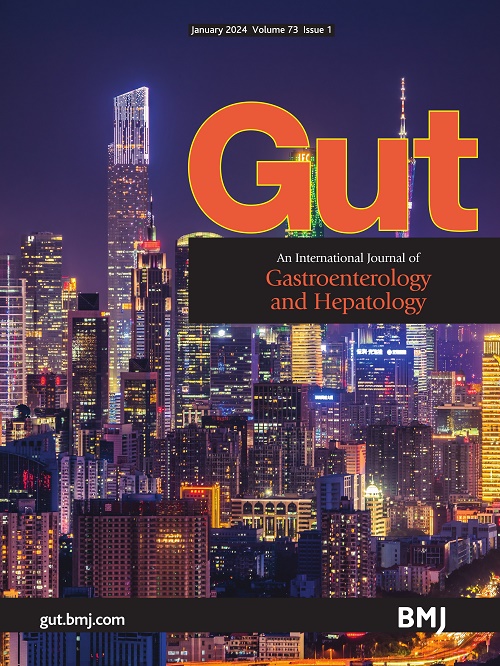NLRP6 deficiency enhances macrophage-mediated phagocytosis via E-Syt1 to inhibit hepatocellular carcinoma progression
IF 23
1区 医学
Q1 GASTROENTEROLOGY & HEPATOLOGY
引用次数: 0
Abstract
This last decade, immunotherapies have shaken up cancer treatment, but only a small percentage of patients benefit from current regimens targeting immune checkpoint inhibitors, including in hepatocellular carcinoma (HCC).1 Genetic and epigenetic intratumour heterogeneity, as well as diversity of immune cell infiltrates, significantly impacts tumour response to targeted therapies. In particular, tumour-associated macrophages (TAM), major components of the immune cell infiltrate, are strongly versatile immune cells. They acquire a large diversity of phenotypes according to cellular and non-cellular signals arising in the tumour niche.2 An ambivalent role is played by TAM during cancer development: they can either favour tumourigenesis and invasion through immunosuppressive and proangiogenic activities or can help suppress tumour growth by their robust phagocytic and immunopotentiation capabilities. Therefore, redirecting macrophage functions towards tumouricidal activities emerges as an interesting strategy to combat solid tumours.3 A range of strategies are used to exploit macrophages as therapeutic interventions: preventing their recruitment, depleting or reprogramming TAM, or infusing engineered macrophages. Transfer of monocyte-derived macrophages to patients fails to inhibit tumour growth due to defects in autologous cells and the need for additional signals to increase the efficiency of adoptive macrophages. Recent research has focused efforts on engineering …NLRP6缺乏通过E-Syt1增强巨噬细胞介导的吞噬作用,抑制肝细胞癌的进展
在过去的十年中,免疫疗法已经动摇了癌症治疗,但只有一小部分患者从目前针对免疫检查点抑制剂的方案中受益,包括肝细胞癌(HCC) 1遗传和表观遗传的肿瘤内异质性,以及免疫细胞浸润的多样性,显著影响肿瘤对靶向治疗的反应。特别是,肿瘤相关巨噬细胞(TAM)是免疫细胞浸润的主要成分,是一种功能强大的免疫细胞。根据肿瘤壁龛中产生的细胞和非细胞信号,它们获得了多种多样的表型TAM在癌症发展过程中扮演着一个矛盾的角色:它们可以通过免疫抑制和促血管生成活动促进肿瘤的发生和侵袭,也可以通过其强大的吞噬和免疫增强能力帮助抑制肿瘤的生长。因此,将巨噬细胞的功能转向肿瘤杀伤活动是对抗实体肿瘤的一种有趣的策略利用巨噬细胞作为治疗干预手段的策略包括:阻止巨噬细胞的募集,消耗或重编程TAM,或注入工程巨噬细胞。由于自体细胞的缺陷和需要额外的信号来提高过继巨噬细胞的效率,单核细胞来源的巨噬细胞转移到患者身上不能抑制肿瘤的生长。最近的研究集中在工程上。
本文章由计算机程序翻译,如有差异,请以英文原文为准。
求助全文
约1分钟内获得全文
求助全文
来源期刊

Gut
医学-胃肠肝病学
CiteScore
45.70
自引率
2.40%
发文量
284
审稿时长
1.5 months
期刊介绍:
Gut is a renowned international journal specializing in gastroenterology and hepatology, known for its high-quality clinical research covering the alimentary tract, liver, biliary tree, and pancreas. It offers authoritative and current coverage across all aspects of gastroenterology and hepatology, featuring articles on emerging disease mechanisms and innovative diagnostic and therapeutic approaches authored by leading experts.
As the flagship journal of BMJ's gastroenterology portfolio, Gut is accompanied by two companion journals: Frontline Gastroenterology, focusing on education and practice-oriented papers, and BMJ Open Gastroenterology for open access original research.
 求助内容:
求助内容: 应助结果提醒方式:
应助结果提醒方式:


